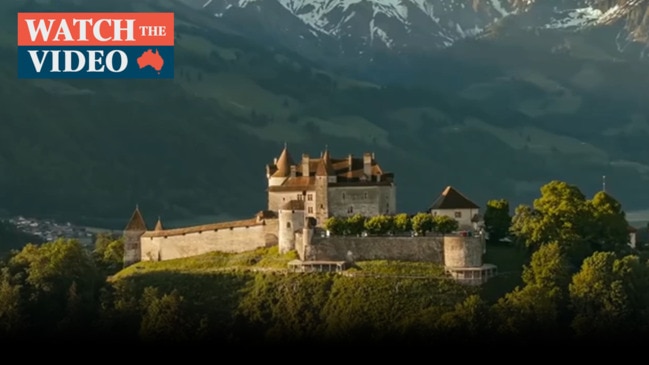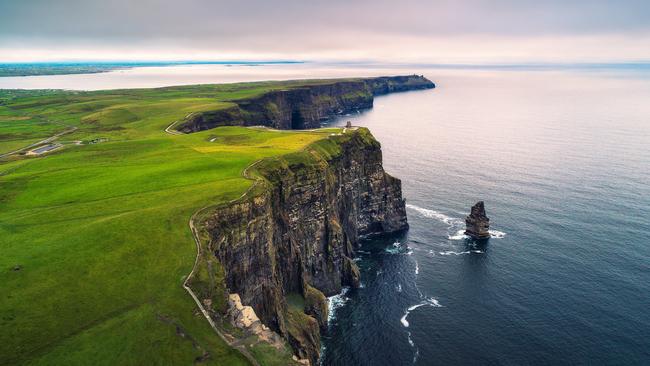Marketing teams’ fierce race for international travellers
Australia's latest campaign faces fierce competition around the globe as countries attempt to take a chunk of the post-Covid travel boom.

From celebrities to sustainability, travellers are being bombarded with marketing campaigns as countries vie to re-establish their share of the $9 trillion global tourism industry.
Tourism Australia unveiled its latest offering this week, in the form of a CGI kangaroo called Ruby exploring major landmarks and inviting the world to “come and say g’day”.
The $125m campaign will go head to head with numerous others currently appealing to travellers to visit their country or city as the Covid pandemic eases and borders reopen.
Among those launched in recent months include Tourism Ireland’s “press the green button campaign” inviting visitors to immediately book a trip to the Emerald Isle; New Zealand’s “If You Seek” crusade challenging tourists to delve deeper into the country’s offerings and Fiji’s “find your Bula” which translates to “spirit of happiness” in the Pacific Island nation.
Discover Italy’s focus is on “slow tourism” in the hope visitors spend weeks rather than days in the country, and the German National Tourism Board is selling unique cultural experiences such as industrial architecture and traditional craftsmanship.
Switzerland is relying on the star power of actor Anne Hathaway and tennis champion Roger Federer to promote its “Grand Tour” with a humorous twist, while Qatar has also gone down the celebrity route using soccer legend David Beckham.
Environment and sustainability are the main focus of Hawaii’s Malama campaign, inviting visitors to “give back” by participating in beach clean ups and tree planting on their holiday.
And Visit Britain is trying to get tourists to travel beyond London with it’s “I travel for …” campaign challenging visitors to submit short videos of their experiences in less-explored destinations.
Griffith Institute of Tourism director Sarah Gardiner said one thing many of the campaigns had in common was the use of “awe-inspiring landscapes” in their imagery.
“They know people are looking to get away from the crowds so you’ll see a lot of tourism marketing at the moment shows beaches with not many people on them or landscapes with very few people in sight,” said Dr Gardiner.
“That’s really about trying to create the impression you’re not going to be surrounded by people when you’re at that destination.”

She said the environmental theme was also coming through strongly as travellers become more conscious of their carbon footprint, and there was a sense of urgency in many of the campaigns.
“You’ll see in this initial period as we move out of the pandemic that destinations are keen to motivate people not just to travel one day, but to travel in the near future,” Dr Gardiner said.
“So we’re seeing those really strong call to actions to not just think about a holiday to the destination at some stage, but to book that holiday right now because destinations need those international visitors back now, not a few years down the track.”
Author of Tourism Crises and Destination Recovery, David Beirman said the best tourism marketing campaigns typically gave people “unique reasons to visit a destination”.
He said highlighting the safety of a destination was also increasingly important, and the value for money, given the skyrocketing cost of airfares.
“Then there is the extent of welcome in terms of how welcoming a destination is, the issue of cultural experiences, and sustainability is becoming a big deal for younger travellers in particular,” said Dr Beirman.
Tourism Australia managing director Philippa Harrison said it was a busy space at the moment with numerous countries vying for international visitors.
But she was confident the characters of Ruby the roo and Louie the unicorn would resonate with lots of people.
“It’s really important we stand out and create fame moments because budgets are big around the world,” said Ms Harrison.
“We have a pretty good budget this year and we have enough to do the job we want to do but I’ve got to say that it’s just important that people notice it and it stands out.”
Both Dr Gardiner and Dr Beirman said the latest TA campaign, featuring Ruby the roo, had the key elements of “difference, warmth and beautiful iconic imagery” that should resonate with international audiences.
“You can’t really go wrong with a kangaroo and g’day,” said Dr Beirman.
But managing director of creative agency The Writers, Stefano Boscutti disagreed.
“Having a red kangaroo against a red landscape in front of a red rock is no way to stand out,” said Mr Boscutti.
“Neither is pinching a slogan from 1984. The whole idea of a souvenir stuffed toy made in China to represent Australia is infantile and lazy and incredibly short-sighted unless of course the strategy is not to be noticed.”







To join the conversation, please log in. Don't have an account? Register
Join the conversation, you are commenting as Logout